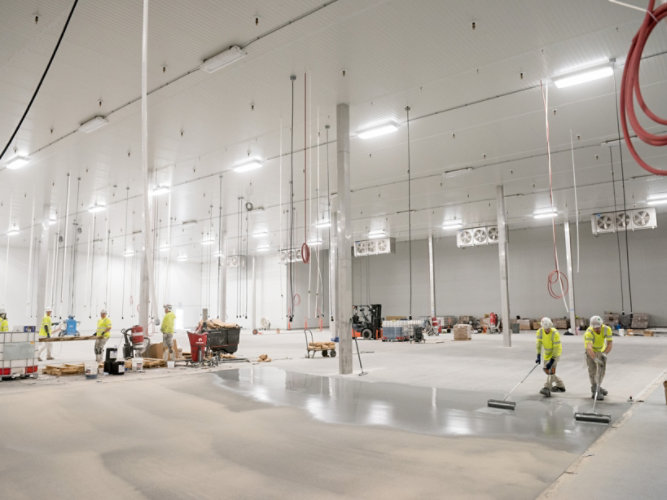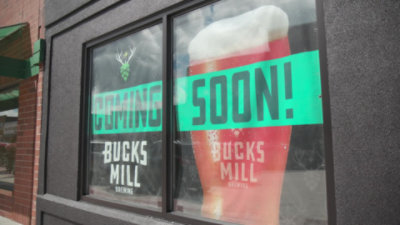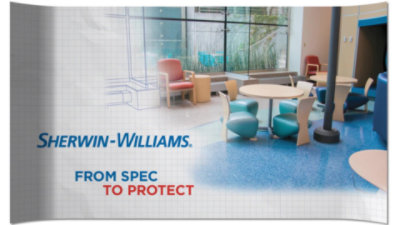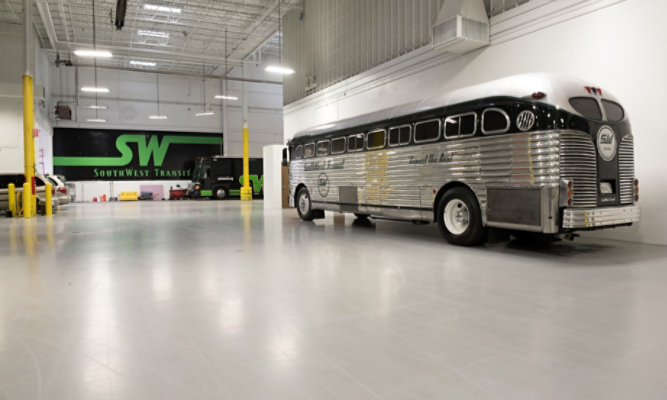How Soon Can You Epoxy Coat Freshly Poured “Green” Concrete?
In floor coating industry jargon, the term “green concrete” refers to a freshly poured and placed concrete mix that has begun to set, but which has not yet fully cured. Standard specifications recommend a minimum 28 day cure period for “green concrete” before an epoxy floor coating or other resinous system can be applied. However, this is only a guideline; the actual waiting period can be much longer depending on the composition of the concrete mix, the relative humidity, air temperatures, and a host of other conditions.
Learn More or Get a Free Flooring Evaluation

Industrial quality epoxy and other resinous floor coatings are comprised of two or more components that are blended together and chemically “cure,” rather than simply dry. A coating system may consist of a primer, one or more midcoats, graded aggregate or decorative elements, various grout coats, finish coats and slip-resistant additives. The resin composition may be all of one general type, such as a variety of different epoxies, or they may vary from layer to layer, such as an epoxy primer and epoxy midcoats, followed by urethane topcoats. Such products are applied in multiple layers over concrete that has been mechanically prepared, using specific techniques and machinery to help ensure the best bond of the system being installed. When selected properly for the given facility and level of traffic, these high performance systems can furnish outstanding durability. They can also impart additional strength, chemical resistance and myriad other desireable characteristics to the slab surface. Industrial-grade resinous coating systems can provide many years of carefree service, saving facilities time and money over the long-term.
However, if an impermeable floor system is installed before the moisture content of newly poured concrete has sufficiently evaporated and/or before the concrete itself has truly cured, the coating can end up encapsulating slab moisture. This can cause bubbles, peeling, or other problems in the epoxy or other resinous flooring.
New concrete can look dry well before it is ready to be coated. Additionally, as a result of how the concrete was mixed and/or differences in site conditions, different areas of the slab may have vary in their moisture levels. Therefore, testing several areas for moisture/moisture vapor is the only valid way to tell if the slab is ready for coating.
Testing “Green” Concrete for Moisture Content and Full Cure
No method of evaluating the moisture content and cure of a concrete is foolproof. However, over time, the four site tests below have been developed to help determine whether or not newly poured “green” concrete is ready to be coated:
- Relative Humidity Test: ASTM F2170
- Calcium Chloride Test: ASTM F1869
- Plastic Sheet Test: ASTM D4263
Method 1 – Relative Humidity Method
Using special probes that get inserted into the concrete surface to a specific depth and distance apart, and which remain in situ for a prescribed period, American Standard Test Method ASTM F2170 enables contractors to measure the relative humidity of the slab at a given point in time. A result of less than 80% RH is generally accepted by most resinous flooring manufacturers as an indication the concrete can be safely coated.
Method 2 – Calcium Chloride Test
Many resinous coating and other flooring manufacturers recommend testing for concrete moisture content using the ASTM F1869, known as the Calcium Chloride Test, to determine the rate at which moisture is moving upward/ evaporating from the “green” concrete slab.
Several areas of a prescribed size, 1,000 sq. ft. apart, are “opened” via shot blasting or diamond grinding. In each area, a pre-weighed petri dish-sized container of calcium chloride dessicant is placed on each open area, then covered with a plastic shell, and all edges completely taped. After 60-72 hours, the dishes of dessicant are resealed and carefully weighed. The test method provides a specific formula that enables the rate of moisture vapor transmission to be measured. For standard flooring systems, most manufacturers require test results of “< 3 pounds/ 1,000 sq.ft./ 24 hours,” or “less than 3 pounds per 1,000 square feet in 24 hours,” prior to installing the floor covering. ASTM F1869 test kits are available.
Method 3 – Plastic Sheet Method
A low tech, old-school way to ballpark a “green” slab’s readiness to receive floor coatings, ASTM D4263 is also the least precise and not always accepted under certain product warranties. However, it can be a useful in a variety of circumstances.
Start by “opening” several areas of the slab surface via shot blasting or diamond grinding. Tape a heavy gauge place sheet, 12” x 12” or larger, over each open area, being careful to completely seal all edges to the substrate. If, after 24 hours, there is observable condensation on the underside of the plastic, or if the covered concrete is darker than the concrete surrounding it, the slab likely contains too much moisture to be coated with a standard system. Wait a week or two and test again. Or better yet, use Method 1 or 2.
The Perfect Coating, Perfectly Timed
Thanks to our new moisture tolerant and moisture mitigating primer technology, along with our innovations in "breathable" floor coatings, Sherwin-Williams offers a wide range of resinous flooring in beautiful colors, textures and designs that can be successfully installed on “green” concrete as early as 7 days after being poured. Our professional technicians can help you select the optimal coating system for your needs—and budget.
Discover More
Industry Expertise and Innovation
See how we help customers find customized solutions for their project and application challenges.
System Lookup
Find out more about our innovative floor systems for a variety of industries.
FIND A SYSTEM

